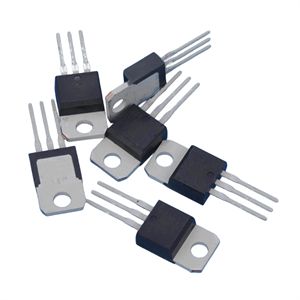Date:2024-09-26 Categories:Product knowledge Hits:609 From: Guangdong Youfeng Microelectronics Co., Ltd(YFW)
What is the freewheeling principle of Schottky diodes in switching power supply circuits? What conditions should be met?
According to the theory of semiconductor physics, the nonlinear relationship between the current and voltage of a diode under static conditions is derived as follows:
I=IS*(e-1)
In the formula, I is the diode current, IS is the reverse saturation current of the diode, IS is generally taken as 8-10 uA, IS increases with temperature, V is the voltage acting on both ends of the diode, VT is the temperature voltage equivalent of the PN junction, and VT=26mV at room temperature.
Assuming a typical Schottky diode has a conduction voltage drop of 0.4V, and parallel diodes have a 0.1% error in forward conduction voltage drop due to manufacturing processes and other factors, the forward conduction voltage drops of the two Schottky diodes are 0.4V and 0.401V, respectively. At this point, assuming IS is only 2uA, equation (1) yields:
I1=IS*(e V/VT -1)=2*10-6 *(e0.4/0.026 -1)=9.6A
I2=IS*(e V/VT -1)=2*10-6 *(e0.401/0.026 -1)=10A
According to the calculation results, parallel connection of Schottky diodes cannot achieve current sharing. Considering that the main disadvantage of Schottky diodes is reverse leakage current, leakage current increases exponentially with temperature and reverse voltage, and IS will increase exponentially. At the same time, the negative temperature coefficient of Schottky diodes can lead to positive feedback, ultimately causing one Schottky to be overloaded and one Schottky to be lightly loaded. If the design is not reasonable, it can cause the overloaded Schottky temperature to be too high, which can easily lead to system failure.

Previous: Classification, Structure, and Principle of MOSFET
Next: Using voltage inspection method to quickly locate fault points in integrated circuits